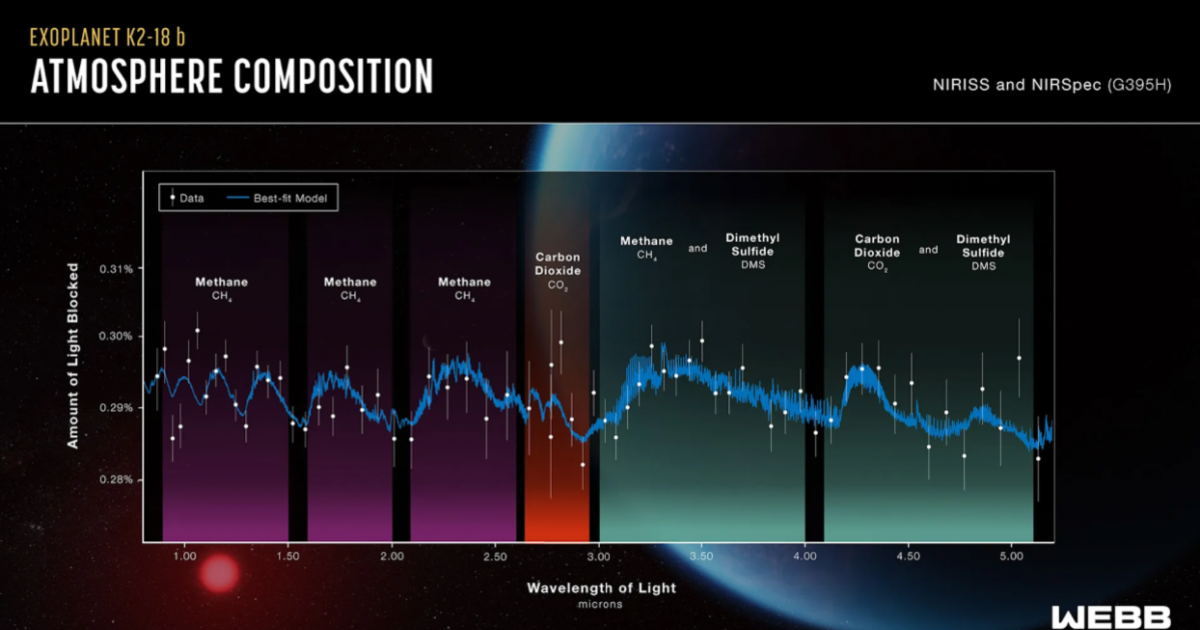
The James Webb is the most powerful telescope humans have ever used. It can see farther, and with more clarity, than we ever imagined could be possible.
Now, it could be confirming that life could exist on a planet other than earth.
It’s on a planet that’s around 120 light years away – one that’s covered in a massive ocean that seems capable of supporting life.
Image Credit: Public Domain
The James Webb detected a molecule called dimethyl sulfide (DMS), and as far as we know, it’s only produced by living organisms.
Researchers also detected methane and carbon dioxide in the atmosphere on K2-18b, which is the name of the planet (for now).
This is known as a Hycean planet, since it has both an ocean and a hydrogen-rich atmosphere. It’s host star gives off enough radiation to allow liquid water to exist.
K2-18b is between the size of Earth and Neptune but are unlike any other planet in our own solar system. This means that, even though researchers are excited, there’s still a ton we don’t know.
“Although this kind of planet does not exist in our solar system, sub-Neptunes are the most common type of planet known so far in the galaxy. We have obtained the most detailed spectrum of a habitable-zone sub-Neptune to date, and this allowed us to work out the molecules that exist in its atmosphere.”
Their paper hasn’t been peer-reviewed yet, so it’s way too early to draw any firm conclusions.
Image Credit: NASA
That said, JWST’s MIRI (Mid-Infared Instrument) spectrograph is coming to help.
“Our ultimate goal is the identification of life on a habitable exoplanet, which would transform our understanding of our place in the universe. Our findings are a promising step towards a deeper understanding of Hycean worlds in this quest.”
When they put it that way, it’s enough to get me excited, too.
I can’t wait to hear about what they discover next.